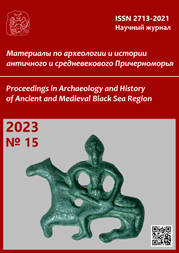Городище Бозок — уникальный памятник степной Сарыарки: история изучения и осмысления
The uniqueness that is the city site of Bozok in the steppes of Saryarka: a history of its research and interpretation
Author(s): Alexey N. Sviridov, Daniyar TleugabulovSubject(s): History, Archaeology, 6th to 12th Centuries
Published by: Нижневартовский государственный университет
Keywords: archaeology; Kazakhstan; city site; Bozok; urban quarters; sacred center;
Summary/Abstract: The article provides an overview of research history of the unique archaeological site, which is the fortified settlement of Bozok in the steppe part of Kazakhstan. The city site is located at the western outskirts of Astana, in a swampy floodplain of the Ishim River’s left bank, on the high eastern shore of the lake Buzukty. It dates back to the 7th (8th) — 16th century. Its discovery and the early years of research are associated with the name of the famous Kazakh archaeologist Kemal A. Akishev. Later, research works at the settlement were carried out by Maral K. Khabdulina as a supervisor. There are four parts in the spatial arrangement of objects of the site. The oldest part is three square-shaped platforms surrounded by ditches and ramparts. To the north of these, there is a complex of dugout dwellings. To the south of the central platforms, there is a necropolis consisting of the ruins of a mausoleum and a series of Muslim burials of the 13th — 16th century. An agro-irrigation system adjoins the ruins of the settlement from the east and north. For a long period of its functioning, the settlement was used not so much as a space for living, but as a special sacred center of the steppe part of Eurasia.
Journal: Материалы по археологии и истории античного и средневекового Причерноморья
- Issue Year: 2023
- Issue No: 15
- Page Range: 542-554
- Page Count: 13
- Language: Russian

